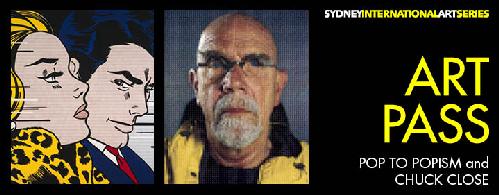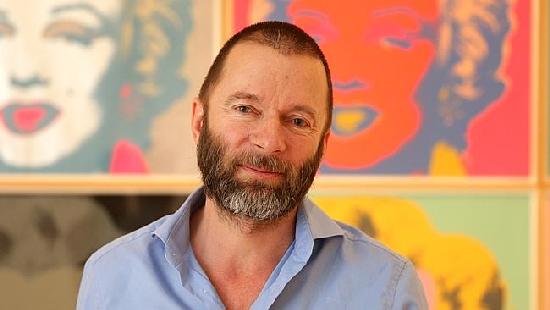|
How
a Warhol print makes art show pop, By Jo Litson -
19th October 2014


Profiles
Art
Creative
Arts Pop
Art Pop
Culture Art
Gallery of NSW

Wayne
Tuniclifee, the curator of the Pop to Popism exhibition
at the Art Gallery of NSW. With Andy Warhol's Marylin.
After
nearly two years of sourcing works for the Art Gallery
of NSW’s Pop to Popism exhibition, curator Wayne
Tunnicliffe had most of what he wanted – but
not a suite of Andy Warhol’s vibrantly coloured
Marilyn Monroe silkscreen paintings.
“I
was at a dinner party and I was lamenting (the fact)
to the person I was sitting next to and she said,
‘oh, a friend of mine in Los Angeles has a set,’”
says Tunnicliffe.
“Her
friend turned out to be Billie Milam Weisman, who
is a director of the Frederick R. Weisman Art Foundation,
who are big collectors and philanthropists, so she
put me in touch.”
The
Marilyn Monroe suite is one of many iconic works in
Pop to Popism, opening next month. Spanning three
decades from the mid-1950s to the 1980s, it features
200 works by more than 70 artists.
Among
them are Warhol’s Triple Elvis and Campbell’s
Soup Cans, Roy Lichtenstein’s first comic-style
painting Look Mickey, David Hockney’s Portrait
of an Artist and Brett Whiteley’s 22-metre long
The American Dream.
It
is the most comprehensive collection of pop art seen
in Australia and the first major pop art exhibition
to include Australian artists.
Loaners
Tunnicliffe
is the AGNSW’s head curator of Australian art.
The inspiration for the show came when he was looking
at the Australian pop art in the Gallery’s collection.
Securing
loans from around the world proved harder than he
had anticipated.
“We
know doing an Impressionist show it’s going to
be incredibly hard because those paintings are highly
valuable and fragile to freight and in big demand,”
he says.
“I
somewhat naively thought that a show about the 1960s,
70s and 80s would be a lot easier. But these are the
works people travel to museums to see so it was a
lot more complex than I initially thought.
“But
we kept up with dogged persistence. What the galleries
responded to was the scope and scale and ambition
of the show and its Australian context so we ended
up getting great things.”
The
exhibition will have an interactive family area and
a specially designed café with a bright yellow
floor and mirrored walls.
“I
don’t think you’d be able to do a show like
this again for a long time,” says Tunnicliffe.
“People are reluctant to lend these works so
I don’t think they will travel for a while.”
Pop
to Popism, Art Gallery of NSW, November 1 – March
1, 2015
(The
Daily Telegraph)
|



